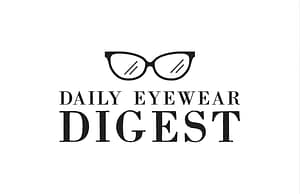As climate awareness continues to rise in 2025, eyewear brands find themselves at the crossroads of fashion, function, and environmental responsibility. Consumers—especially younger generations—are no longer just shopping for looks; they’re investing in values. For the eyewear industry, this means stepping up and aligning products, processes, and messaging with a rapidly growing demand for sustainable living.
Gone are the days when a “green” label was enough. Today’s buyers scrutinize materials, question labor practices, and expect measurable impact. The shift is profound—and it’s forcing eyewear brands to evolve or be left behind. This article explores exactly what climate-conscious consumers expect from eyewear brands in 2025, and how the industry is rising to meet these demands.
Who Are Climate-Conscious Consumers?
Core Values and Buying Behavior
Climate-conscious consumers are not a niche—they are a mainstream movement. These individuals seek products that reflect ethical production, environmental protection, and social justice. Their purchasing power is rooted in research, not impulse. They’re informed, intentional, and often willing to pay a premium for sustainability.
Generational Influence: Gen Z and Millennials
Leading the charge are Gen Z and Millennials. Raised in an age of climate crisis, they prioritize brand integrity and eco-transparency. With platforms like TikTok and Instagram amplifying environmental messages, these generations influence global consumption habits and hold brands publicly accountable.
Top Sustainability Expectations in 2025
Eco-Friendly Materials
Eyewear consumers in 2025 demand alternatives to traditional petroleum-based plastics. Popular sustainable options include:
- Recycled plastics from ocean waste or post-consumer goods
- Biodegradable acetates made from plant-based cellulose
- Bamboo and wood frames, responsibly harvested and durable
These materials not only reduce ecological footprints but also offer unique textures and visual appeal.
Carbon-Neutral Manufacturing Processes
From factory emissions to freight transportation, carbon footprints matter. Climate-conscious buyers expect brands to:
- Invest in renewable energy
- Optimize water and energy use
- Offset emissions with certified carbon credits
Sustainable production isn’t optional—it’s expected.
Minimalist, Durable Design Philosophy
Consumers are rejecting fast fashion eyewear. Instead, they want timeless designs made to last. Longevity reduces landfill waste, encourages intentional consumption, and aligns with minimalist living.
Transparency and Traceability in the Supply Chain
Lifecycle and Circular Economy
Forward-thinking eyewear brands offer product lifecycle solutions like:
- Take-back programs for recycling old frames
- Refurbishing services for damaged glasses
- Subscription models with circular intentions
These approaches reflect a closed-loop system that consumers deeply respect.
Certifications and Labels that Matter
Savvy shoppers look for verifiable sustainability through:
- FSC (Forest Stewardship Council) for wood materials
- Fair Trade Certification
- Cradle to Cradle Certified® for product life cycle impact
The presence of these certifications builds trust and communicates commitment.
Packaging: A New Frontier for Sustainability
Plastic-Free and Compostable Options
Eyewear packaging has become a focal point of waste reduction. Brands that adopt biodegradable wraps, seed paper inserts, and cardboard made from recycled pulp score high with eco-aware consumers.
Refillable and Reusable Packaging Models
Innovators are exploring reusable pouches and collapsible cases that reduce the need for throwaway packaging. These eco-upgrades elevate unboxing experiences and align with low-waste lifestyles.
Ethical Labor and Community Responsibility
Fair Wages and Safe Work Conditions
Environmental ethics go hand-in-hand with human rights. Buyers now examine how workers are treated across the production chain. Transparency about wages, factory conditions, and worker welfare is crucial.
Local Sourcing and Community Engagement
Sourcing locally reduces transportation emissions and strengthens community economies. Consumers support brands that collaborate with local artisans and reinvest in surrounding communities.
Tech Integration for Sustainability
Virtual Try-Ons and Reduced Returns
Digital tools like AR try-ons help reduce waste by minimizing returns and improving buying accuracy. Brands using these technologies are applauded for merging innovation with conservation.
Blockchain and Supply Chain Verification
Blockchain allows consumers to trace the origins of every frame—from raw material to retail shelf. This level of transparency is revolutionary and meets the growing demand for full disclosure.
Brand Transparency and Marketing Honesty
Storytelling with Substance
Gone are the days of vague sustainability claims. Today’s consumer expects brands to share authentic stories about:
- Material sourcing
- Energy usage
- Community partnerships
Honesty builds brand loyalty and prevents skepticism.
Sustainability Reporting and Impact Data
Numbers speak louder than slogans. Brands that share environmental impact data—like water saved or emissions reduced—enhance credibility and inspire consumer trust.
Success Stories: Eyewear Brands Leading the Way in 2025
Several brands are setting the standard:
- Pela Vision: Creates 100% biodegradable sunglasses.
- Karün: Partners with local communities to turn ocean waste into stylish frames.
- Eco Eyewear: Offers a comprehensive take-back and recycling program.
These pioneers prove that sustainability and style can coexist—and thrive.
FAQs About Eco-Friendly Eyewear in 2025
1. Are sustainable eyewear frames durable?
Yes. Many are made with high-grade recycled or biodegradable materials built to last years.
2. Can I recycle my old glasses?
Absolutely. Many brands now offer take-back programs or donate used frames to vision charities.
3. Do eco-friendly glasses cost more?
Often, yes—but they reflect fair labor, safer materials, and lower environmental harm.
4. How can I verify a brand’s sustainability claims?
Look for third-party certifications and detailed sustainability reports on their website.
5. Is eco-friendly eyewear stylish?
Very much so! In fact, many designs lead the fashion scene because of their unique materials and stories.
6. What’s the most sustainable packaging for glasses?
Recycled cardboard, seed paper, and reusable cloth cases are among the best options.
Conclusion: The Future of Sustainable Eyewear Starts Now
In 2025, what climate-conscious consumers expect from eyewear brands is more than just lip service. It’s a demand for a better, cleaner, and more ethical way of doing business. From eco-materials to digital innovations and transparent storytelling, the eyewear industry must adapt to this new paradigm—or risk falling out of focus.

